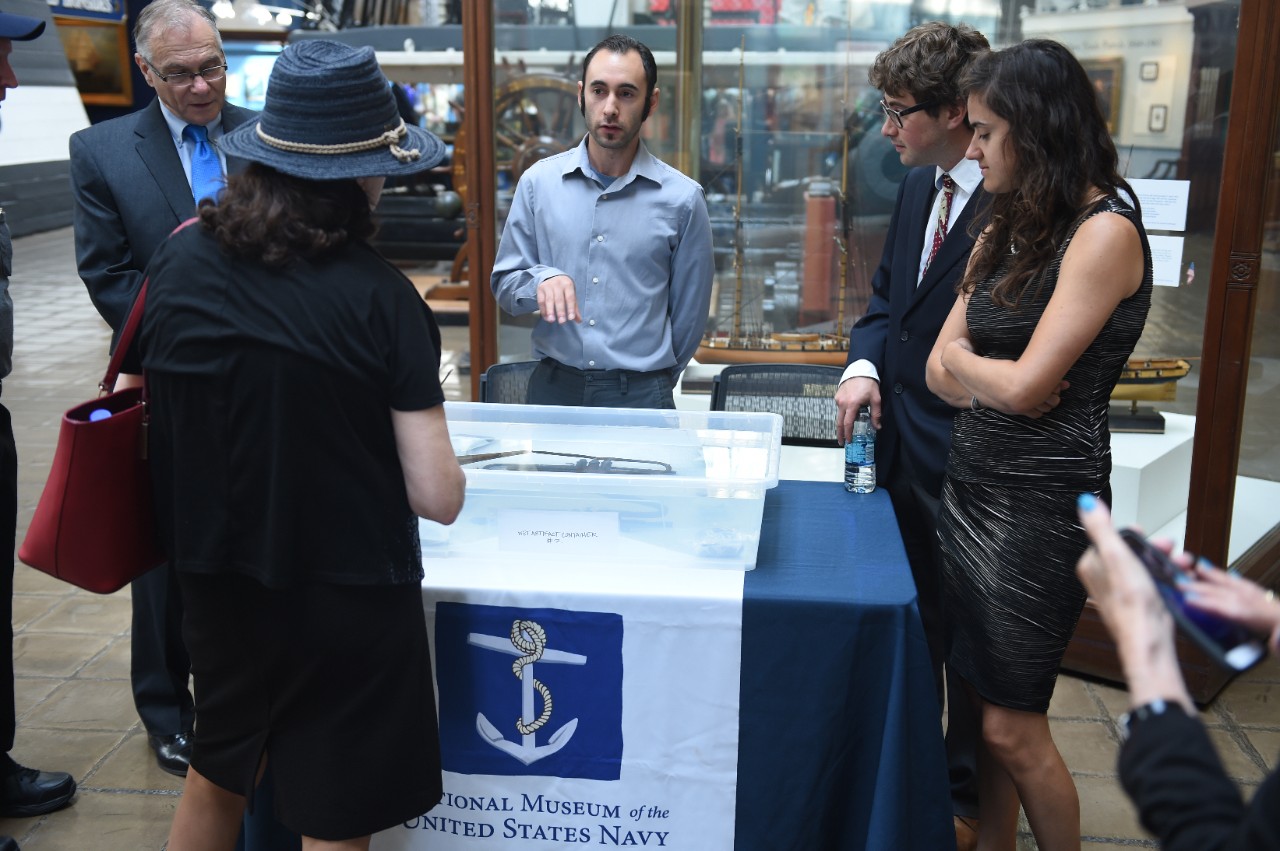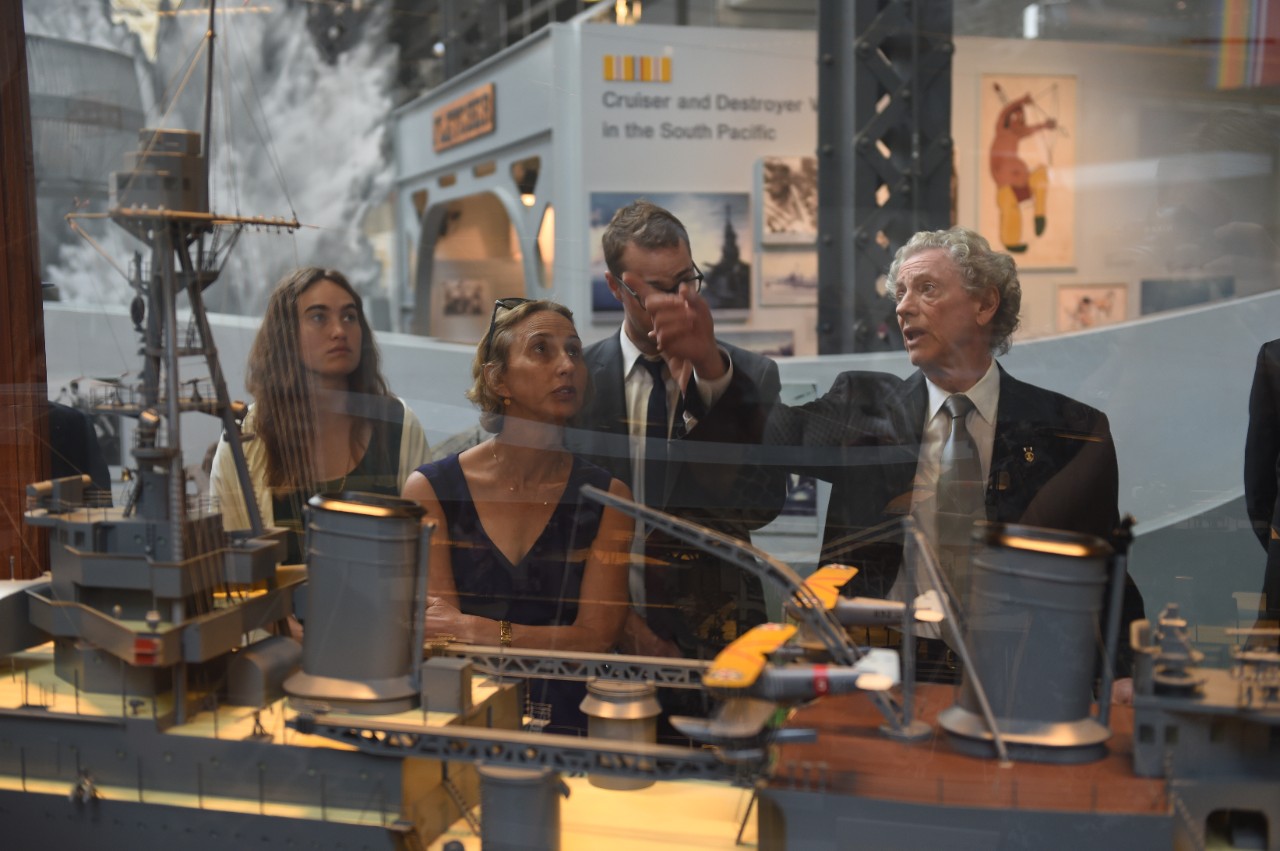
Special for the occasion, a recovered trumpet and a painting of the WWII-era cruiser USS Houston (CA 30) mid-battle were on - display for the group, while members of the Naval History and Heritage Command (NHHC) were standing by to answer any questions about the artifact and artwork. Afterward, the group moved on to the scale model of the ship.
Nicknamed “The Galloping Ghost of the Java Coast,” Houston was sunk in combat during the World War II Battle of Sunda Strait in 1942, along with Australian light cruiser HMSA Perth. More than 600 Sailors and Marines went down with the Houston, including the ship’s commanding officer, Capt. Albert H. Rooks, who posthumously received the Medal of Honor for extraordinary heroism. However, 366 survivors were later captured by the Japanese and held as prisoners of war. Two hundred ninety remained by wars end. Houston was awarded two battle stars, as well as the Presidential Unit Citation.
“The fate of Houston and Perth was not known until the end of WWII and surviving POWs provided detailed after action reports,” said NHHC Director Sam Cox. “Captain Rooks and the valiant crew of USS Houston, who fought alone against insurmountable odds and endured incredible horror and suffering, nevertheless left an indelible legacy of honor, courage, and commitment that serve as an inspiration to today’s Navy and its Sailors.”
The ship remains sovereign property of the U.S. under the Sunken Military Craft Act.
The Naval History and Heritage Command, located at the Washington Navy Yard, is responsible for the preservation, analysis, and dissemination of U.S. naval history and heritage. It provides the knowledge foundation for the Navy by maintaining historically relevant resources and products that reflect the Navy's unique and enduring contributions through our nation's history, and supports the fleet by assisting with and delivering professional research, analysis, and interpretive services. NHHC is composed of many activities including the Navy Department Library, the Navy Operational Archives, the Navy art and artifact collections, underwater archeology, Navy histories, nine museums, USS Constitution repair facility and the historic ship Nautilus.

For more news from Naval History and Heritage Command, visit www.navy.mil/local/navhist/.


